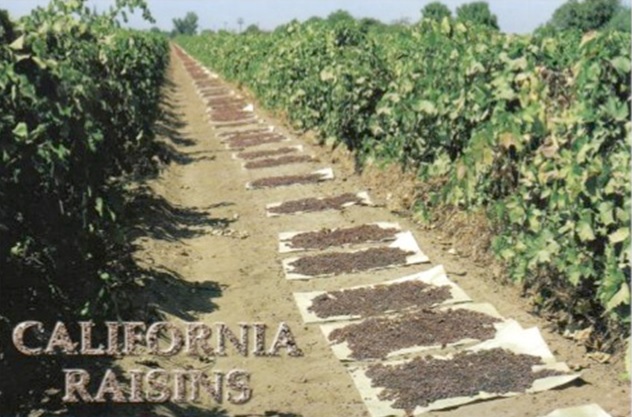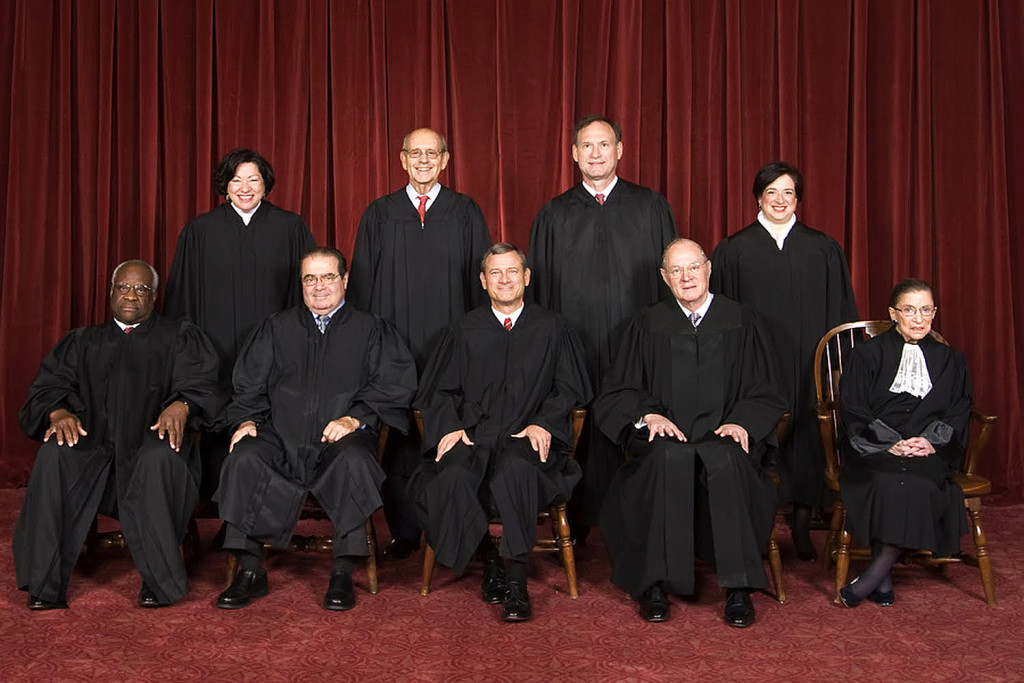Property Rights and California Raisins: Headed to the Supreme Court–Again
Justices To Rule on Whether Feds’ Depression-Era Agricultural Regulations Unconstitutionally “Take” Farmers’ Property Without Compensation
 The media and U.S. Supreme Court watchers have understandably focused on the justices’ order yesterday agreeing to review the constitutionality of state same-sex marriage bans–automatically making it the “blockbuster” issue before the Court this Term. Largely overshadowed by that news was the justices’ contemporaneous decision to revisit the interrelated issues of property rights, the Takings Clause of the U.S. Constitution and the respective rights of federal regulators and California raisin farmers.
The media and U.S. Supreme Court watchers have understandably focused on the justices’ order yesterday agreeing to review the constitutionality of state same-sex marriage bans–automatically making it the “blockbuster” issue before the Court this Term. Largely overshadowed by that news was the justices’ contemporaneous decision to revisit the interrelated issues of property rights, the Takings Clause of the U.S. Constitution and the respective rights of federal regulators and California raisin farmers.
The latter case is Horne v. Department of Agriculture, No. 14-185, and represents a major Supreme Court development in its own right. Horne involves a dispute over the federal government’s power to administer and enforce a Depression-era system of agricultural commodity controls against California raisin farmers who believe that system effects an unconstitutional taking of their property without compensation.
If this property rights dispute sounds vaguely familiar, it should: this is actually the second time the Supreme Court has taken up the constitutional conflict between San Joaquin Valley raisin farmers Marvin and Laura Horne and the U.S. Department of Agriculture. In 2013, the justices overturned a Ninth Circuit ruling that the Hornes should have filed their takings claim in the specialized U.S. Court of Federal Claims in Washington, D.C. The Supreme Court disagreed, holding in a unanimous opinion that the Hornes had properly brought their takings lawsuit in U.S. District Court in California. The justices remanded the case for a decision on the merits.
On remand, the Ninth Circuit Court of Appeals last year again ruled against the Hornes–this time on the merits. The Court of Appeals first held that the Department of Agriculture’s system of “marketing orders,” which require the Hornes to divert a portion of their annual raisin crop to a reserve intended to “smooth out” raisin prices over time, did not constitute–and shouldn’t be analyzed as–a physical taking of the Horne’s property. (That’s critical because, under applicable takings principles, government’s physical occupation or seizure of private property is nearly always viewed by courts as per se takings requiring compensation.) Instead, said the Ninth Circuit, the relevant question is whether the government’s marketing orders triggered a regulatory taking of the Horne’s property by constituting an unfair exaction on their ability to market their raisin crop.
Government defendants in takings cases traditionally fare far better when courts apply regulatory–as opposed to physical–takings rules. And that was the case before the Ninth Circuit in Horne. Applying Supreme Court regulatory takings precedents, the Court of Appeals ruled that the Hornes had failed to demonstrate that the government’s marketing order effected an unconstitutional regulatory taking.
 In their successful petition for certiorari, the Hornes insist that the Ninth Circuit got it wrong by reviewing their constitutional claim through the prism of regulatory takings principles, rather than as a physical taking. They also contend that the Court of Appeals erroneously applies greater solicitude to takings claims involving real property (i.e., land) than to those concerning personal property (e.g., money, or the Hornes’ raisin crop). The United States, in contrast, argues in opposing the petition that the Ninth Circuit correctly analyzed the Hornes’ challenge to the federal raisin marketing order, and its reserve mandate, as a regulatory taking claim.
In their successful petition for certiorari, the Hornes insist that the Ninth Circuit got it wrong by reviewing their constitutional claim through the prism of regulatory takings principles, rather than as a physical taking. They also contend that the Court of Appeals erroneously applies greater solicitude to takings claims involving real property (i.e., land) than to those concerning personal property (e.g., money, or the Hornes’ raisin crop). The United States, in contrast, argues in opposing the petition that the Ninth Circuit correctly analyzed the Hornes’ challenge to the federal raisin marketing order, and its reserve mandate, as a regulatory taking claim.
The Supreme Court will hear arguments in Horne v. Department of Agriculture in late April, and a decision is expected by the end of June.
In handicapping the case, the odds would seem to favor the Hornes, for several reasons. First, the facts are unattractive from the government’s perspective. This is not an instance where the challenged government program protects clean air or water, or preserves threatened wetlands. Rather, the case involves an antiquated, Depression-era federal raisin-regulation program that many observers believe has long-since outlived its usefulness. (During oral arguments in the first Horne case in 2013, Justice Kagan mused from the bench that the federal raisin marketing program is “the world’s most out-dated law.”) Second, Stanford Law Professor Michael McConnell, the Hornes’ lead counsel and a former judge on the Tenth Circuit Court of Appeals, has done a rather effective job in the petition for certiorari of characterizing the raisin marketing order’s reserve mandate as a physical taking. If the justices agree with that characterization, the case is in all likelihood pretty much over, for the reasons mentioned above. Finally, there’s the venerable adage that the Supreme Court does not take up cases for the purposes of affirming the decisions below. That’s not always true, of course, but the adage proves accurate more often than not. It’s especially apt when the case–as here–comes from Ninth Circuit, which in recent years has suffered far more reversals than affirmances at the hands of the Supreme Court in takings cases (and in environmental cases generally). Finally, recall that the Supreme Court has already reversed the Ninth Circuit once in this very same litigation. It seems–to this observer, at least– unlikely that the justices would grant certiorari a second time in Horne only to agree with the Ninth Circuit’s substantive takings analysis.







Reader Comments